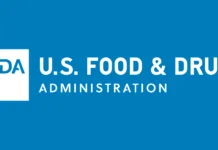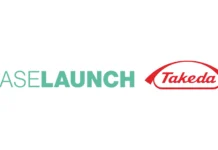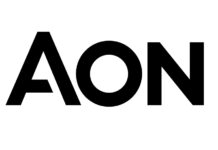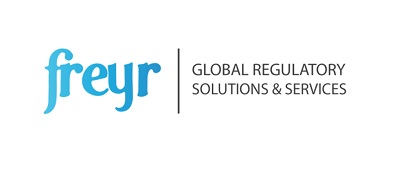Pharma manufacturers face several challenges when it comes to labels, both in terms of design and production. As the label size tends to increase every year, adding clarity, consistency, and appeal is becoming increasingly difficult. Pharmaceutical manufacturers also face new legislative and Regulatory requirements on top of the existing challenges. The information that patients need, thus, can sometimes be lost because there is simply no space on the label. This is where ePI comes in. The ePI is essentially a digital version of the PI.
The ePI opens new doors to include extremely creative storytelling on a pharmaceutical pill or capsule while meeting all the Regulatory requirements. It is a significant aspect in moving the pharmaceutical industry away from pages of printed text on the back of the prescription and Patient Information Leaflets (PILs) towards highly engaging interactive digital communication, potentially replacing entire leaflets.
The Global Scenario
In Belgium and Luxembourg, the ePIL pilot is now a collaborative effort between both the pharma industry and Government Bodies. The European Commission (EC) supports and encourages it. During the proposed two (02)-year-long pilot, the print leaflets of a variety of prescription drugs confined to inpatient use and commercialized in Belgium and Luxembourg are not included in their hard copy but can be checked online via reputable websites.
In Japan, to formally adopt eLabeling, the Pharmaceuticals and Medical Devices Act was amended. Paper labeling was replaced, and a necessary framework was added to give access to the most recent and up-to-date labeling information to all Healthcare Professionals (HCPs).
European regulators have established high-level, key principles that will direct future work in establishing common electronic standards, processes, governance, etc., that need to profit patient safety. The principles were developed in collaboration with other key stakeholders.
On August 19, 2019, the Health Sciences Authority (HSA) in Singapore published the electronic labeling guidance. In the guidance, eLabeling refers to Product Information (PI), including Package Insert (PI) and Patient Information Leaflet (PIL), that is made available electronically via a barcode or web address on the packaging, which ties to a safe web system disclosing the product data in digital format.
The Taiwan Food and Drug Administration (TFDA) publishes labeling information on its website. In 2016, the TFDA released an app that allows users to contact medication manufacturers using a mobile device.
Furthermore, trade organizations in certain Asian nations, including Malaysia and Thailand, have begun to form eLabeling collaborations and want to further explore eLabeling ideas with the Health Authorities (HAs).
The United States Food and Drug Administration (USFDA) has shown a keen interest in using digital platforms for prescription drug labeling meant for doctors and pharmacists for a long time, and we may see electronic PIs being adopted soon.
Moonshots for ePI
For Pharma Companies
- To enhance content reuse, govern the way reused information is updated, give a deep degree of transparency, and automated output without any post-translation formatting or Direct-to-Patient (DTP). Pharmaceutical firms can employ content management systems to create, manage, translate, and publish PIs. This might ultimately lower cycle times by 30-40% and translation expenses by 30%.
- Translation and submission of PI have traditionally been handled via Word and PDF formats, but ePI would be shared and updated in an XML format. Modern Computer Aided Translation (CAT) tools are already well-suited to handle this file type, and so translation agencies should not have much difficulty handling the texts in the new format. The same holds good with all developments relating to product information.
- Improving compliance with dosage regimen via interactive (Digital Therapeutics) DTx solutions plugged into the ePI.
- With the ePI, pharma companies can create a dynamic and interactive PIL that engagingly delivers important PI and advice. The ePI also allows product managers to provide innovative solutions with added value, with the inclusion of video, games, 3D visuals, animation, online tests, questionnaires, animated graphic sequences, interactive tools, and more. The possibilities are endless, and pharmaceutical companies can tailor the contents to align with the product, diagnosis, or situation.
For companies with extensive product lines, the ePI just might be the key to reducing product complexity and using pharma sales force resources more efficiently.
For HCPs
- Use cases include instant access to detailed pharmaceutical administration instructions, focused ePI searches for specific medical illnesses and treatments, and notifications for revisions to safety information.
- By using ePI, medication information is presented to health professionals clearly and concisely so they can efficiently educate, prescribe, and administer medication.
For Regulators
- ePI will improve the efficiency with which the PI is managed throughout Regulatory procedures. The ePI might remove several manually performed processes and inconsistencies that are possible causes of a mistake by allowing PI updates to be made throughout all applicable PI annexes and products.
For Patients
- With the ePI, there are important opportunities at play, such as cross-border prescription, making medicines easily shareable between the Member States, which was of particular importance during the pandemic. Products could be shipped from country A to country B, and a patient would have access to the PI in their language. Translations can appear ‘automatic,’ providing the right information to people traveling or emigrating and removing the need to have multi-language packages for countries like Belgium, which leads to PILs that are hardly readable.
- In a world becoming increasingly digitized, the ePI could also be used alongside other strategies such as e-prescriptions and smartphone applications. For example, a barcode on the side of a carton or packet could make the most up-to-date ePI available immediately on any smartphone, in any language.
Challenges
Multiple questions need to be answered to ensure a system is brought to a place where the ePI becomes a success and then, gradually, a norm. A few of them are as follows:
- What risks do we face while running two (02) parallel systems globally– one of the ePI and one of the traditional paper package leaflets/SPC – that will need to be simultaneously maintained, at least in the short term? How long will be the transition period?
- If it is considered local integration e.g., – how long will it take to harmonize the various national efforts to produce an EU-wide ePI and portal?
- Is there a risk of leaving behind patients who are not technologically savvy by relying on out-of-date product information?
- How do we monitor that the ePI will not be used for the delivery of promotional information?
On the Future of Electronic Information
Digital imaging enables pharmaceutical manufacturers to present a whole array of additional, often interactive information directly on the pill or capsule label. The pill or capsule itself could be equipped with digital imaging technology, for example, by attaching a tiny camera to the pill or capsule. The patient would then take a photo of the pill or capsule which is captured on a low-cost HD or OLED digital display. This creates an interactive experience by linking the patient to the PI. The interactive screen could be arranged anywhere on the label and could be designed to fulfill all Regulatory requirements.
What remains is to see global adoption levels by all stakeholders, such as pharma companies, regulators, HCPs, and most importantly, patients.
Author
A Pharmacist and MBA graduate – Manan holds experience across the pharmaceutical and healthcare value chain ranging across Regulatory Affairs, healthcare advertising and communications, formulation development, R&D, and digital therapeutics.
A Steam Lead at Freyr, Manan drives innovation in processes and communication with creative flair.





















